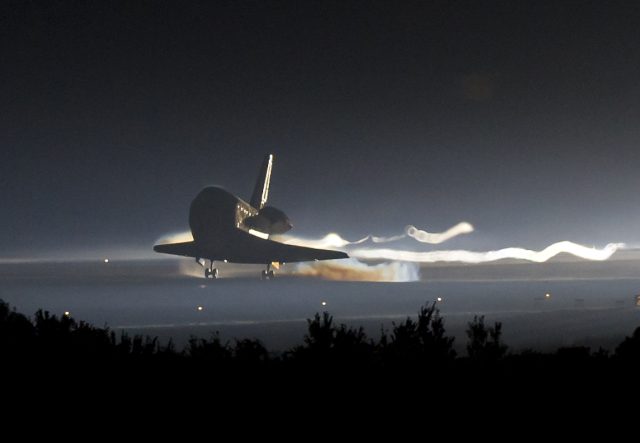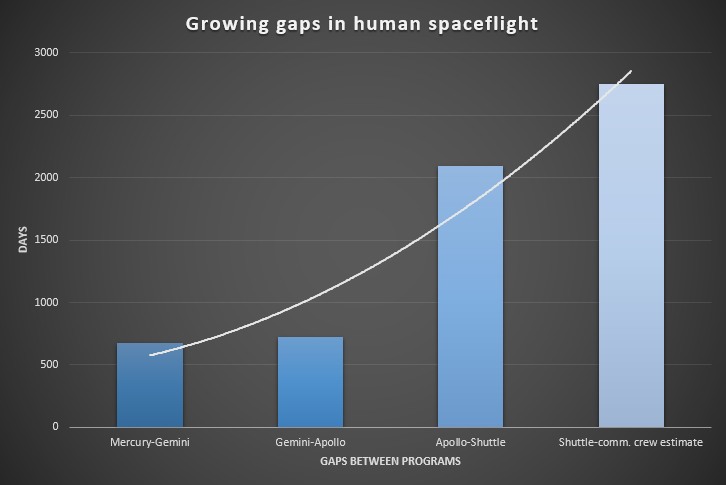
No humans have launched into space from US soil for more than five years, when space shuttle Atlantis made its final voyage. Since that spacecraft landed on July 21, 2011, a total of 2,098 days have passed. Former Space Shuttle Program Manager Wayne Hale noted on Twitter Tuesday that this gap has now surpassed the previous longest US spaceflight gap—2,089 days—which occurred between the end of the Apollo program and the first space shuttle mission.
The final Apollo mission, which launched in 1975 and featured an in-space rendezvous with a Russian spacecraft, presaged the end of the "space race" and future cooperation between the United States and Russia in space. And since the space shuttle's retirement in 2011, NASA has relied exclusively on Russia to get its astronauts to the International Space Station. It will do so again on Thursday, with the launch of Jack Fischer from the Baikonur Cosmodrome in Kazakhstan.
It would be easy to pillory NASA for this gap, but the space agency largely doesn't deserve the blame. The failure belongs to the American government, which knew literally for more than a decade that the shuttle's end was coming, but it failed to prepare for its inevitable retirement or articulate a plan for what was to come next. This failure belongs to the presidencies of George W. Bush and Barack Obama and especially to Congress, which underfunded the program both Bush and Obama settled on to replace the space shuttle—a commercial crew plan to leverage development of private spacecraft.

So far, NASA's stopgap measure of relying on Russia has worked. Despite some provocations, the Russians have largely been reliable partners in keeping the International Space Station staffed, supplied, and safe. For example, when US astronauts were forced to retreat to the Russian side of the station due to fears of an ammonia leak in 2015, the deputy prime minister over space, Dmitry Rogozin, called the station to ensure the cosmonauts were taking care of their American colleagues.
Ending the gap, forever
Moreover, NASA is taking steps to ensure this kind of capability gap never again occurs. With the commercial crew program, NASA will have two providers of human launches, SpaceX and Boeing, likely beginning sometime early in 2019. Moreover, through its cargo delivery program, NASA is also helping a third provider, Sierra Nevada Corp., complete an orbital vehicle that will eventually be capable of bringing humans into space.
It's not clear when the present gap will ultimately end, and it may depend on how one views Blue Origin. The private company led by Jeff Bezos is likely to begin test launches from West Texas late this year or early in 2018. The tests will briefly lift "test passengers" into space on suborbital flights. These missions are analogous to the early Mercury flights. Virgin Galactic also has a chance to make crewed, suborbital flights in 2018.
If one does not count Blue Origin as closing the gap, the government's orbital capability will come from the commercial crew program. Both private providers' programs have faced delays. Right now it is possible that SpaceX or Boeing could launch crewed flights in the second half of 2018, although early 2019 seems more likely. There is also an outside chance the Trump administration will direct NASA to put crew on the first flight of NASA's Space Launch System rocket, and if so, that flight could come in late 2019.
Regardless, the latest and longest gap in US spaceflight activities should close within two years or less. Thanks to a multiplicity of private providers, which should eventually include orbital flights by Blue Origin as well, the gap may never open again after that.
reader comments
144